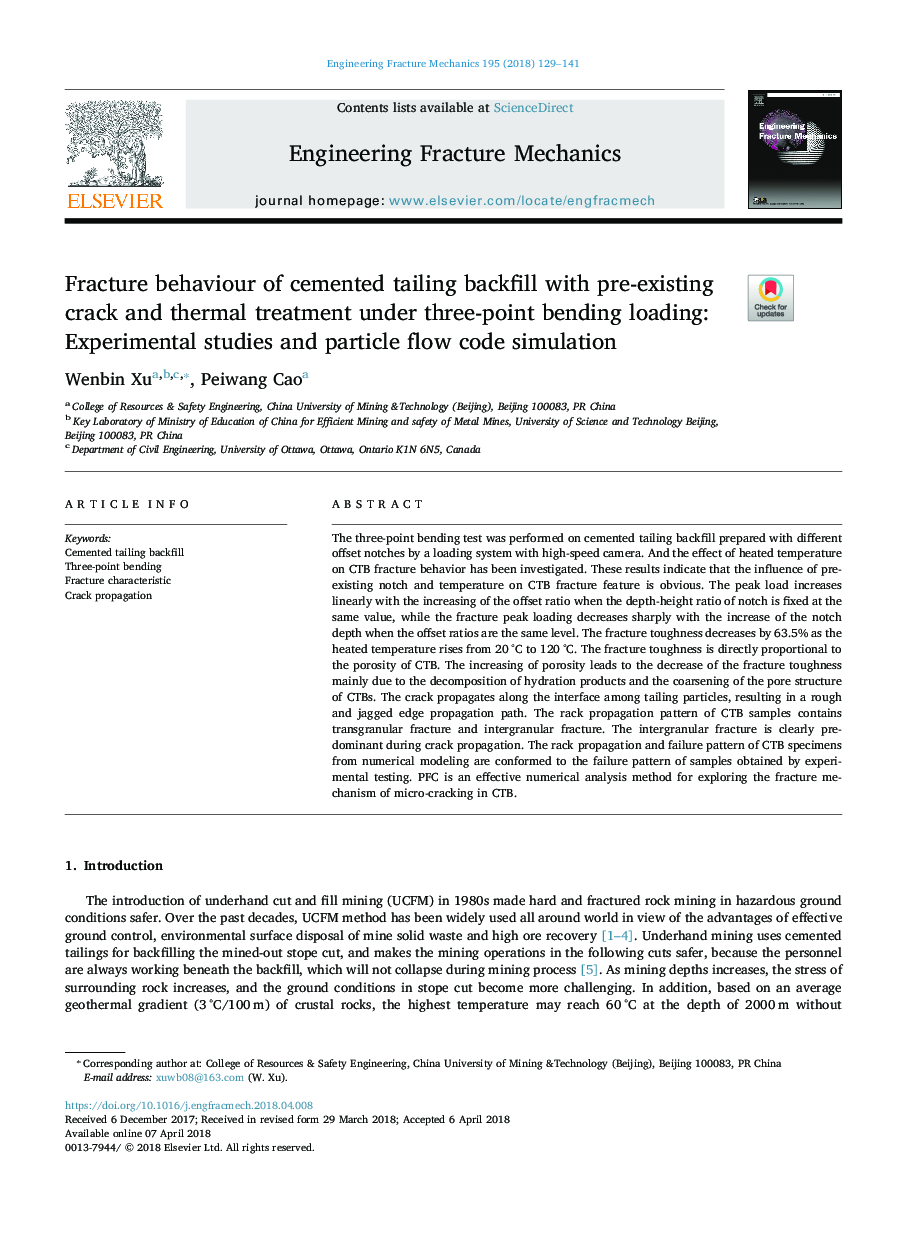| Article ID | Journal | Published Year | Pages | File Type |
|---|---|---|---|---|
| 7168837 | Engineering Fracture Mechanics | 2018 | 13 Pages |
Abstract
The three-point bending test was performed on cemented tailing backfill prepared with different offset notches by a loading system with high-speed camera. And the effect of heated temperature on CTB fracture behavior has been investigated. These results indicate that the influence of pre-existing notch and temperature on CTB fracture feature is obvious. The peak load increases linearly with the increasing of the offset ratio when the depth-height ratio of notch is fixed at the same value, while the fracture peak loading decreases sharply with the increase of the notch depth when the offset ratios are the same level. The fracture toughness decreases by 63.5% as the heated temperature rises from 20â¯Â°C to 120â¯Â°C. The fracture toughness is directly proportional to the porosity of CTB. The increasing of porosity leads to the decrease of the fracture toughness mainly due to the decomposition of hydration products and the coarsening of the pore structure of CTBs. The crack propagates along the interface among tailing particles, resulting in a rough and jagged edge propagation path. The rack propagation pattern of CTB samples contains transgranular fracture and intergranular fracture. The intergranular fracture is clearly predominant during crack propagation. The rack propagation and failure pattern of CTB specimens from numerical modeling are conformed to the failure pattern of samples obtained by experimental testing. PFC is an effective numerical analysis method for exploring the fracture mechanism of micro-cracking in CTB.
Related Topics
Physical Sciences and Engineering
Engineering
Mechanical Engineering
Authors
Wenbin Xu, Peiwang Cao,
